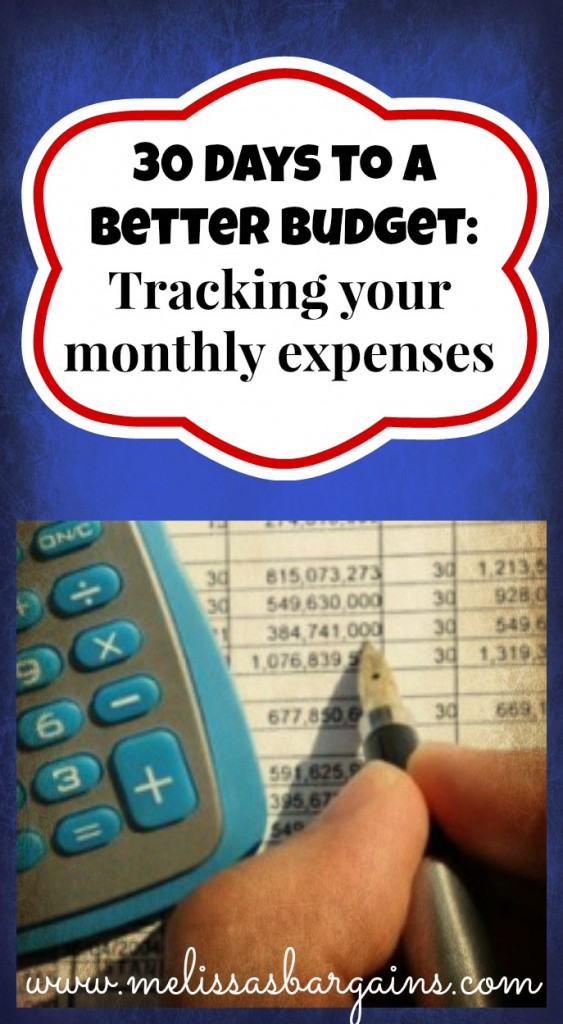If your goal this year is to be better about budgeting, your first step is to track ALL of your monthly expenses. You have to know where you’re spending your money each month before you can decide how you want to spend it in future months. If you have mainly been using a credit or debit card, this should be easy because you can simply look at your statements.
Budgeting Basics: Tracking Your Monthly Expenses
1. Track all of your monthly expenses – This means EVERYTHING including trips to Starbucks for your morning coffee or trips to the vending machine at work for your caffeine fix in the afternoons. Sometimes this is very enlightening. Maybe you had no idea you were spending $100 a month at Starbucks or $30 a month on the soda machine at work!
2. Assign your purchases to general categories. I have been budgeting for awhile and have gotten very specific about the categories that we use for budgeting because I like to know exactly where our money is being spent. Some people prefer to use more general categories (for example, food would cover grocery purchases and eating out).
Here are the categories I use for budgeting:
- Blow (my husband and I each get a set amount of money each month that we can spend on whatever we want, no questions asked)
- Charity (monthly contributions to our church)
- Child Care
- Clothing
- Debts (credit card payments)
- Eating out
- Entertainment (this includes our date night, Netflix, and a little extra for something fun for the family)
- Gifts (this includes monthly gift purchases plus money for Christmas gifts)
- Groceries
- Housing (this includes our mortgage, homeowner’s insurance, alarm fees, and property taxes)
- Kids Allowance
- Kids School Expenses (this includes school lunch once a week and extra money for school supplies, school pictures, book orders, and any other school-related expenses that come up during a month)
- Medical (this includes budgeting for monthly co-pays, my daughter’s orthodontics, prescriptions, and money for over the counter prescription purchases)
- Miscellaneous (this includes household products like toilet paper, trash bags, and paper towels)
- Pet Care (this includes our monthly payment for pet insurance as well as food and treats)
- Recreation (this includes your YMCA membership and expenses for kids activities like swimming and basketball)
- Savings
- Toiletries (this includes health and beauty items such as makeup, toothpaste, deodorant, etc.)
- Transportation (this includes our car payment, monthly gas expenses, car insurance, budgeting for oil changes, and budgeting for yearly registration and inspections)
- Utilities (this includes cable, electricity, gas, water, and our cell phones)
- Vacation
3. Review your monthly allocations. Where are you spending the most money? Could you cut spending in one of those areas? Maybe you didn’t realize how much you were spending on cable TV each month. Could you go to a basic plan instead? Could you cut down eating out to once a week?
This is the first post in my 30 Days to a Better Budget series! I’ll be giving you ideas about how to start a cash only budget, how to cut your budget, and how to budget for specific situations.









